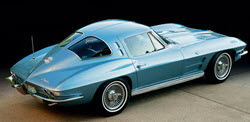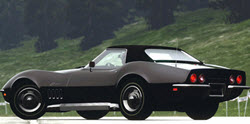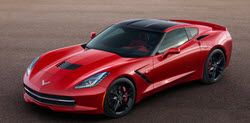The influence of Harley Earl on the Corvette’s creation.
The Visionary Behind the Corvette
Harley Earl is a name that resonates profoundly within the automotive industry, particularly for his pivotal role in the creation of the iconic Chevrolet Corvette. As the first head of General Motors’ Design Department, his influence extends far beyond aesthetics, touching on the very essence of American automotive culture.
Early Innovations and Design Philosophy
Harley Earl joined General Motors in 1927, marking the beginning of a career that would revolutionize car design. With a keen interest in the integration of both form and functionality, Earl brought an innovative approach to the industry. Having studied aircraft design, he was well-versed in advanced engineering principles that he tactfully applied to automobiles. This background enabled him to view cars not merely as utilitarian vehicles but as works of art that should exhibit grace and elegance.
In an era dominated by boxy, utilitarian cars, Earl introduced streamlined shapes and aerodynamic contours that were both visually appealing and functionally superior. His designs often employed modern materials and techniques, laying the groundwork for what would become quintessential aspects of automotive design. The influence of aircraft design principles was evident in his focus on minimalistic, sleek lines that reduced drag and enabled better performance.
The Birth of the Corvette
Harley Earl had a vision that many in the American auto industry had not yet embraced—a stylish yet affordable sports car that could stand toe-to-toe with its European counterparts. In the early 1950s, this vision was translated into reality with the development of the Chevrolet Corvette. The project was a collaborative effort with Chevrolet, aiming to fill a niche in the market for an American sports car.
In 1953, this vision came to fruition with the debut of the first Corvette. It was an embodiment of Earl’s design philosophy, featuring a lightweight fiberglass body—a revolutionary choice at the time that allowed for both improved performance and reduced manufacturing costs. Coupled with a powerful engine, the Corvette was not only a testament to Earl’s innovative mindset but also a bold statement from Chevrolet about the future of American sports cars.
Significance of the Corvette
The Corvette was more than just a new model; it represented a paradigm shift in the American automotive industry. This vehicle became a symbol of ingenuity, blending cutting-edge design with high performance. The success of the Corvette validated Earl’s approach and ideas, ushering in a new era for American car manufacturers who began to prioritize not only the mechanical quality but also the aesthetic allure of their vehicles.
The Corvette established a new standard for what an American car could be. It captured the imagination of the public, changing consumer perceptions and preferences. No longer were American cars seen as mere tools for transportation; they could be objects of desire and symbols of status. This shift had a lasting impact on the industry, influencing the design and production of sports cars in the United States for decades to come.
Legacy and Lasting Impact
Harley Earl’s legacy in the automotive industry is immortalized through the Chevrolet Corvette, a vehicle that many consider one of the greatest achievements in car design. His pioneering principles of combining aesthetics with function have become embedded in the automotive culture, influencing generations of designers and engineers.
Even today, the elements that Earl introduced are prevalent in the cars developed by Chevrolet and other manufacturers. His emphasis on cutting-edge design and performance resonates, as the Corvette continues to evolve with each iteration, adapting to modern demands while retaining the core principles Earl established.
For those interested in delving deeper into the history and development of the Corvette, the National Corvette Museum offers a comprehensive look at its inception, evolution, and enduring impact on the automotive world.
In summary, Harley Earl’s visionary approach and relentless pursuit of innovation have had an indelible impact on the automotive industry. The Chevrolet Corvette stands as a testament to his influence, encapsulating his design ideals and serving as a lasting legacy of his contributions to car design. It is a reminder of the power of ingenuity and the importance of pushing boundaries to achieve greatness.



